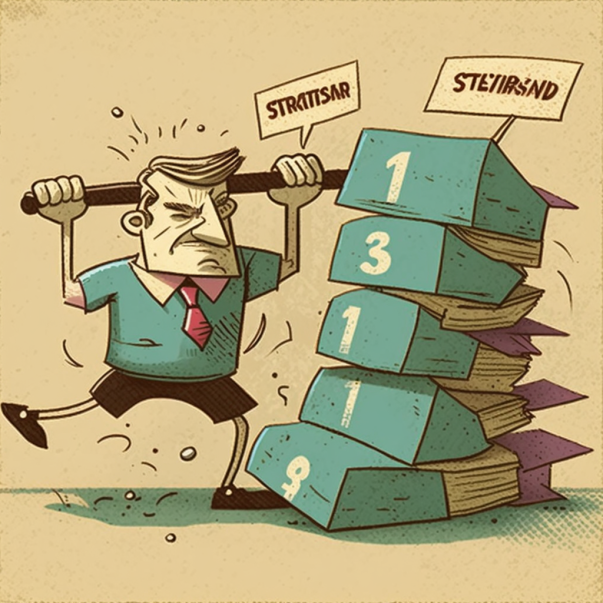Agile waste from Mary & Tom Poppendieck and Toyota’s Seven Forms of Waste are both frameworks that identify areas where waste can occur in a software development process. Here is a breakdown of each framework:
Agile Waste from Mary & Tom Poppendieck:
- Partially done work: Any feature that is put on hold wastes the time and effort already invested and makes the codebase less maintainable.
- Extra Processes: Any process that does not add value, such as documentation that isn’t read or additional rubber stamping, can be considered waste.
- Extra Features: Low-value features that are not used or only used infrequently can add complexity to the application and do not provide any value.
- Task Switching: Switching tasks reduces efficiency and adds context-switching overhead, which can reduce the time available for delivery.
- Waiting: Time lost while waiting to start, such as approval delays and dependencies, can slow down the process and cause delays.
- Motion: Time lost moving artifacts or data from one location to another or hunting for information on wikis can be considered waste.
- Defects: The cost of fixing defects and the impact of re-work on the bottom line is considered waste.
Toyota’s Seven Forms of Waste:
- Transportation: Any movement of a product or material that does not add value is considered waste.
- Inventory: The accumulation of excess inventory represents a capital outlay that cannot yet produce an income and contributes to waste.
- Motion: Any movement or action that does not add value, such as wear and tear on equipment or unnecessary downtime, is considered waste.
- Waiting: Any time that a product or material is waiting and not being processed is considered waste.
- Overproduction: Making more of a product than is required results in several forms of waste, including transaction costs, storage costs, and excess inventory.
- Over processing: Doing more to a product than is required by the end-customer results in additional time and cost to produce the product.
- Defects: Having to discard or rework a product due to earlier defective work or components results in additional cost and delays.
In both frameworks, defects are identified as a source of waste. Other areas of waste identified in both frameworks include waiting, motion, and excess production. However, the agile framework also identifies waste in the form of partially done work and extra processes, while Toyota’s framework identifies waste in the form of excess inventory and over-processing.
By understanding and mitigating these different forms of waste, software development teams can work more efficiently, reduce costs, and deliver higher quality products.
| Area | Agile Manifesto | Mary & Tom Poppendieck | Toyota’s Seven Forms of Waste |
|---|---|---|---|
| Partially done work | Emphasizes working software over comprehensive documentation, accepting change, and delivering value continuously. | Any feature put on hold wastes time and makes the codebase less maintainable. | – Overproduction: Making more of a product than required. – Overprocessing: Doing more to a product than required by the end-customer. – Defects: Having to discard or rework a product due to earlier defective work or components. |
| Extra Processes | Emphasizes simplicity and minimizing unnecessary work. | Any step in the process that does not add value is wasteful, such as documentation that is not read or additional rubber-stamping. | – Overproduction: Making more of a product than required. – Overprocessing: Doing more to a product than required by the end-customer. – Waiting: Whenever the product is not in transportation or being processed, it is waiting (typically in a queue). |
| Extra Features | Emphasizes prioritizing customer collaboration and responding to change. | Low-value features that are not used or only used infrequently waste resources and increase application complexity. | – Overproduction: Making more of a product than required. – Overprocessing: Doing more to a product than required by the end-customer. |
| Task Switching | Emphasizes the importance of focus, communication, and collaboration. | Switching tasks reduces efficiency, and it’s better to complete one thing at a time. | – Waiting: Time lost while waiting to start, such as approval delays and dependencies. – Motion: Time lost moving artifacts or data from one location to another or hunting for information on wikis. |
| Waiting | Emphasizes the importance of delivering value continuously and minimizing delays. | Time lost while waiting to start, such as approval delays and dependencies. | – Waiting: Whenever the product is not in transportation or being processed, it is waiting (typically in a queue). |
| Motion | Emphasizes the importance of face-to-face communication and minimizing unnecessary work. | Time lost moving artifacts or data from one location to another or hunting for information on wikis. | – Motion: In contrast to transportation, which refers to damage and transaction costs associated with moving the product, motion refers to the damage and costs inflicted on what creates the product. |
| Defects | Emphasizes the importance of quality and continuous improvement. | The cost of fixing defects and the impact of rework on the bottom line. | – Defects: Having to discard or rework a product due to earlier defective work or components. |




